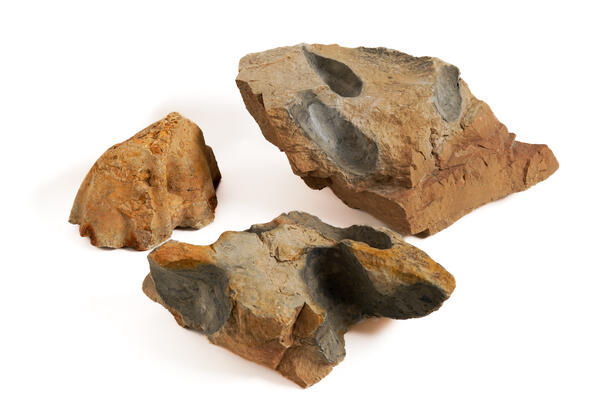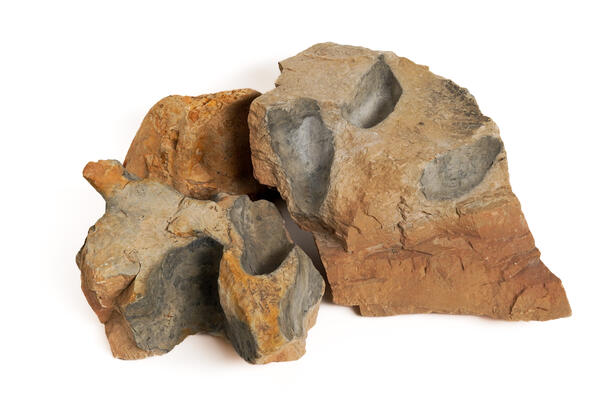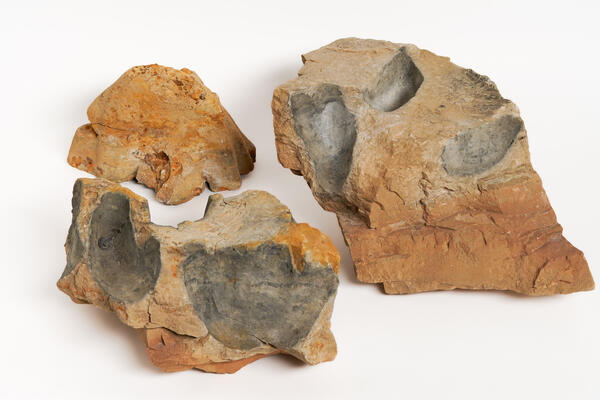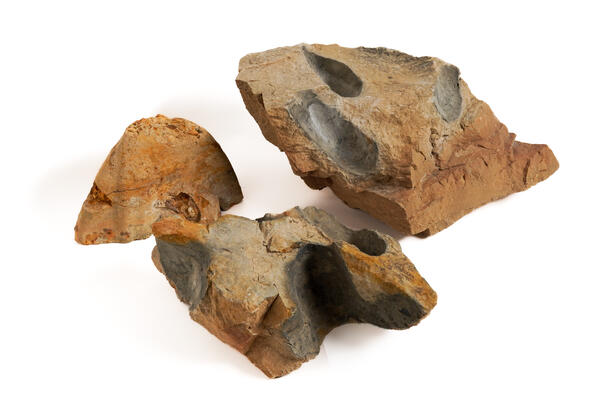Dinosaurs are reptiles from the Archosaurs subclass. The first species appeared about 233–243 million years ago. The behavior of ancient reptiles depended on environment and their physiology. There were both carnivore and herbivore species. Some species were terrestrial, others were aquatic and some could even fly. The dinosaur population reached its peak in the Jurassic period of the Mesozoic era. It started about 208 million years ago, after the Triassic, was followed by the Cretaceous and lasted about 56 million years. The term “dinosaur” was introduced in 1842 by the English biologist Richard Owen to describe the first fossil remains of ancient lizards that struck scientists with their size.
During the excavation of the Upper Jurassic layer in the Peski quarry in Kolomna, a track was found, which looked like a set of fossilized footprints heading in the same direction. The track looks as if it was often used by single terrestrial creatures (e.g., to get to a drinking place), or many of them walked on it one time. The assumption that those were dinosaur footprints was related to a previous finding in this quarry. Earlier, a karst cave with sediments of flora and fauna of the Upper Jurassic period had been discovered there. The fossils showed lungfish and sarcopterygii fish, an ancient shark, ancient salamander, turtle and two species of dinosaurs: tselurosaurus and miniraptor.
The remains of dinosaurs — a claw and a few teeth — were also found in the quarry. It is possible that some distant relatives of these reptiles might have left their footprints a few million years later, in the Upper Jurassic period. The dinosaurs went extinct at the end of the Cretaceous, about 66 million years ago. Whether this extinction was gradual or sudden is currently the subject of debate; no consensus on this has been reached on the issue. The extinction of the dinosaurs was part of the so-called great extinction which took place at the same time: marine reptiles (mosasaurs and plesiosaurs) and flying lizards, many molluscs, including ammonites, belemnites and many tiny algae went extinct with the dinosaurs. A total of 16% of marine animal families (47% of marine animal genera) and 18% of terrestrial vertebrate families became extinct.
During the excavation of the Upper Jurassic layer in the Peski quarry in Kolomna, a track was found, which looked like a set of fossilized footprints heading in the same direction. The track looks as if it was often used by single terrestrial creatures (e.g., to get to a drinking place), or many of them walked on it one time. The assumption that those were dinosaur footprints was related to a previous finding in this quarry. Earlier, a karst cave with sediments of flora and fauna of the Upper Jurassic period had been discovered there. The fossils showed lungfish and sarcopterygii fish, an ancient shark, ancient salamander, turtle and two species of dinosaurs: tselurosaurus and miniraptor.
The remains of dinosaurs — a claw and a few teeth — were also found in the quarry. It is possible that some distant relatives of these reptiles might have left their footprints a few million years later, in the Upper Jurassic period. The dinosaurs went extinct at the end of the Cretaceous, about 66 million years ago. Whether this extinction was gradual or sudden is currently the subject of debate; no consensus on this has been reached on the issue. The extinction of the dinosaurs was part of the so-called great extinction which took place at the same time: marine reptiles (mosasaurs and plesiosaurs) and flying lizards, many molluscs, including ammonites, belemnites and many tiny algae went extinct with the dinosaurs. A total of 16% of marine animal families (47% of marine animal genera) and 18% of terrestrial vertebrate families became extinct.





